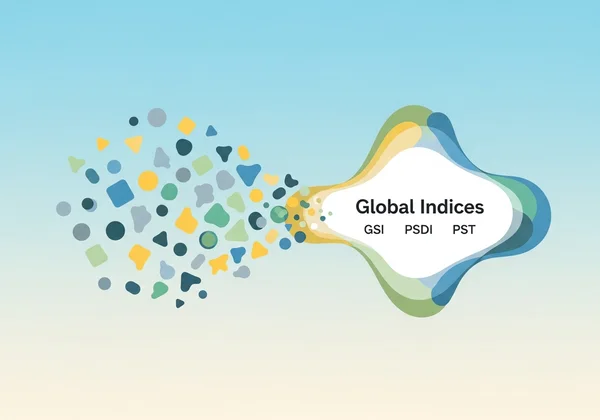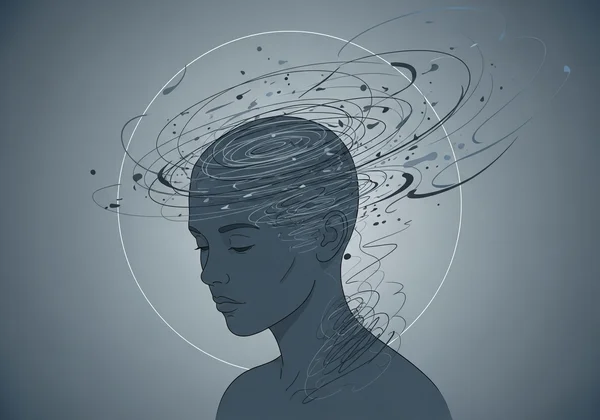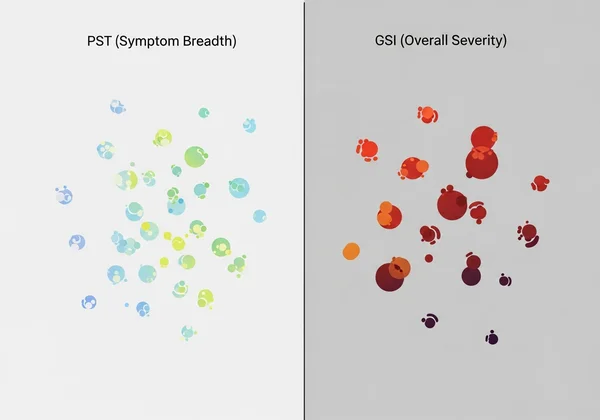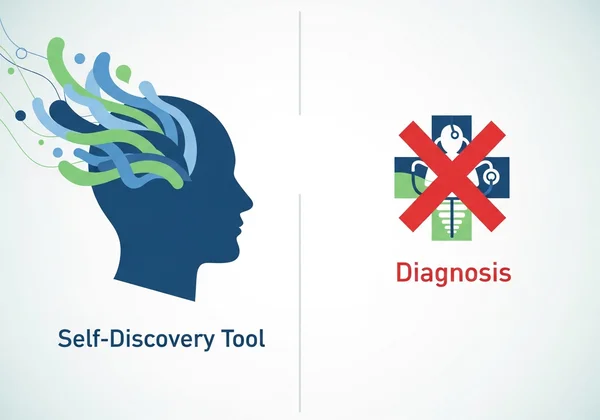Understanding Your SCL-90 Psychology Test Scores: GSI, PSDI, PST Explained
Have you ever completed a detailed psychological assessment only to be met with a screen of numbers and acronyms? If you've taken the Symptom Checklist-90 (SCL-90) and are staring at scores like GSI, PSDI, and PST, you might be wondering what they all mean. This is a common and important step in the journey of self-discovery. The real benefit of any psychology test isn't just taking it; it's understanding the unique story your answers reveal. So, what is psychological testing for? It's a structured way to gain insight into your emotional and psychological well-being, and these global scores are the key to unlocking that insight.
This guide will demystify the three global indices of the SCL-90. We'll break down what each score measures, how they relate to one another, and what they might suggest about your inner world. By the end, you'll be equipped to view your results as a powerful tool for self-awareness. Ready to begin? You can always start your assessment to follow along with your own report.
Understanding How to Interpret SCL-90 Results Effectively
Before diving into the specifics of GSI, PST, and PSDI, it's essential to understand why these "global indices" are so important. While the SCL-90 measures nine primary symptom dimensions—like depression, anxiety, and somatization—the global scores provide a high-level summary. They synthesize the detailed information into a clear, concise overview of your psychological state.
Why Global Indices Offer a Deeper Insight into Your Wellbeing
Think of the nine symptom dimensions as individual ingredients in a recipe. They tell you what components are present. The global indices, however, are like the final dish—they tell you about the overall flavor, intensity, and complexity of the meal. They provide a holistic picture of your psychological well-being that isolated scores cannot. This big-picture view is often the most useful starting point for reflection, helping you identify the overall level of distress you may be experiencing.

The Genesis of SCL-90: Dr. Derogatis and Psychometric Reliability
To trust the results, you must trust the tool itself. The SCL-90 was developed by Dr. Leonard R. Derogatis and has been a cornerstone in psychological assessment for decades. Its widespread use in clinical and research settings is a testament to its psychometric reliability and validity. This means the test consistently measures what it's supposed to measure. When you take the SCL-90 on a platform like ours, you are using a scientifically-grounded instrument designed to provide meaningful and dependable feedback.
Deep Dive into the SCL-90 GSI Score: Global Severity Index
The Global Severity Index (GSI) is arguably the most critical single score from the SCL-90. If you only look at one number to get a quick snapshot of your results, this is the one. It is considered the best single indicator of your current level of psychological distress.
What is GSI and How is it Calculated for Overall Distress?
The GSI score provides a measure of your overall distress. It's calculated by averaging the scores of all 90 items on the test. This unique calculation captures two crucial aspects of your experience: the number of symptoms you have endorsed (the breadth) and the intensity of the distress they are causing you (the depth). A higher GSI score reflects a greater level of distress across a wider range of symptoms. It’s a comprehensive metric that summarizes the severity of your psychological state.
What a High SCL-90 GSI Score Might Suggest About Your Experience
A high GSI score may suggest that you are feeling generally overwhelmed and are experiencing a significant level of psychological strain. It doesn't point to one specific problem but rather indicates that your overall emotional and mental resources are being taxed. It’s a signal that paying closer attention to your mental health could be beneficial. Viewing this score isn't about judgment; it's about awareness. It is a data point that can empower you to explore your experiences more deeply with a free psychology test.

Positive Symptom Total (PST Index SCL-90): Measuring Symptom Breadth
While the GSI gives you a measure of overall severity, the Positive Symptom Total (PST) provides a different, simpler perspective. It focuses exclusively on the number of symptoms you reported experiencing, regardless of how severe they are.
Counting Symptoms: Understanding the Scope of Your Concerns
The PST is a straightforward count of how many items on the SCL-90 you rated as being greater than zero (i.e., you experienced the symptom at least a little bit). This score measures symptom breadth. It tells you how varied and widespread your symptoms are. For example, a person with a high PST might be dealing with a little bit of anxiety, some trouble sleeping, and minor interpersonal issues—a wide array of concerns.
PST vs. GSI: Differentiating Between Symptom Count and Intensity
It's crucial to understand the difference between PST and GSI. PST is simply the count of symptoms. GSI is the average intensity of all 90 potential symptoms. Someone could have a high PST (many different symptoms) but a relatively low GSI if most of those symptoms are very mild. Conversely, someone could have a low PST (only a few symptoms) but a high GSI if those few symptoms are causing extreme distress.

Positive Symptom Distress Index (PSDI): Intensity of Your Experience
The third global index, the Positive Symptom Distress Index (PSDI), adds another layer of nuance to your results. It helps you understand the average intensity of the symptoms you are actually experiencing.
PSDI Explained: The Average Distress Level of Your Symptoms
The PSDI is calculated by taking the sum of all your scores and dividing it by the PST (the number of symptoms you reported). This calculation gives you the average distress level for the symptoms that you endorsed. It answers the question: "Of the issues I'm currently facing, how intense are they on average?" This score is excellent for understanding the severity of your active concerns.
When PSDI is Significant: Recognizing Profound Symptom Acuity
A high PSDI score is particularly insightful. It indicates that the symptoms you are experiencing are, on average, quite severe. This is true even if you have a low PST. For instance, a person might only report five symptoms (a low PST), but if they rate all five as "Extremely" distressing, their PSDI will be very high. This highlights a high degree of symptom acuity—meaning the problems are sharp and profound, even if they aren't widespread. Interpreting this score can help you pinpoint the intensity of your current challenges.
What a High SCL-90 Score Across Indices Really Means for You
Understanding each index is helpful, but their true power comes from looking at them together. By comparing your GSI, PST, and PSDI, you can paint a highly detailed picture of your psychological landscape and begin your journey of self-improvement.
Navigating Your Results: Self-Reflection and Personal Growth
Consider your scores a map for self-reflection. A high GSI, PST, and PSDI may suggest a period of significant, widespread distress that warrants attention. A high PSDI with a low PST could mean you have a few specific, intense issues to focus on. Use these insights not as a final judgment, but as a starting point for curiosity and personal growth. What areas of your life are being impacted? What small steps can you take to address these patterns? A quality mental health test is the first step on this path.
The Crucial Disclaimer: SCL-90 as a Tool, Not a Diagnosis
It is absolutely essential to remember that the SCL-90, like any online self-report tool, is not a substitute for a professional diagnosis. The results from our SCL90 online test are designed to be an educational and informational resource to aid your self-discovery. They can provide valuable insights and highlight areas for further exploration, but they cannot and should not be used to self-diagnose a psychological disorder. If your results cause you concern, please consider them a prompt to seek guidance from a qualified mental health professional.

Empowering Your Self-Discovery Journey with SCL-90 Insights
Decoding your SCL-90 scores doesn't have to be intimidating. By understanding the Global Severity Index (GSI), Positive Symptom Total (PST), and Positive Symptom Distress Index (PSDI), you can transform confusing numbers into meaningful insights. Key takeaways:
- GSI measures your overall distress level.
- PST counts the number of different symptoms you're experiencing.
- PSDI reveals the average intensity of those symptoms.
At PsychologyTest, we believe that making exploration easier makes life richer. Our goal is to provide you with scientifically-backed, AI-powered tools to help you understand yourself better. Your results are a starting point for a deeper, more empowered journey of personal growth.
Ready to gain your own personalized insights? Start your journey on our homepage and take the free SCL-90 assessment today.
Frequently Asked Questions About SCL-90 Global Scores
What does a high SCL-90 GSI score indicate for my mental health?
A high Global Severity Index (GSI) score generally indicates a significant level of overall psychological distress. It suggests you may be feeling overwhelmed by a combination of different symptoms and their intensity. It's a strong signal that dedicating time and energy to your mental well-being, such as through self-care practices or seeking support, could be very beneficial.
How do the PST and PSDI indices differ in what they measure?
The Positive Symptom Total (PST) and Positive Symptom Distress Index (PSDI) measure two different aspects of your experience. PST measures breadth: it is a simple count of how many distinct symptoms you reported. PSDI measures intensity: it calculates the average severity of only the symptoms you reported. You could have many mild symptoms (high PST, low PSDI) or a few very intense symptoms (low PST, high PSDI).
Is the SCL-90 online test accurate for self-assessment purposes?
Yes, when used correctly, the SCL-90 is a highly reliable and scientifically validated tool for self-assessment. The accuracy of your results depends on your honesty while answering the questions. It is an excellent screening tool for gaining self-awareness and identifying potential areas of concern. However, it is not a diagnostic tool. For a formal diagnosis, you must consult a healthcare professional. You can try our SCL90 test to see how it works.
When should I seek professional help based on my SCL-90 results?
You should consider seeking professional help if your scores are persistently high, if they cause you significant worry, or if you feel your symptoms are interfering with your daily life, work, or relationships. The SCL-90 can be a great catalyst for this decision, but ultimately, if you are struggling, reaching out to a therapist or counselor is always a proactive and courageous step.